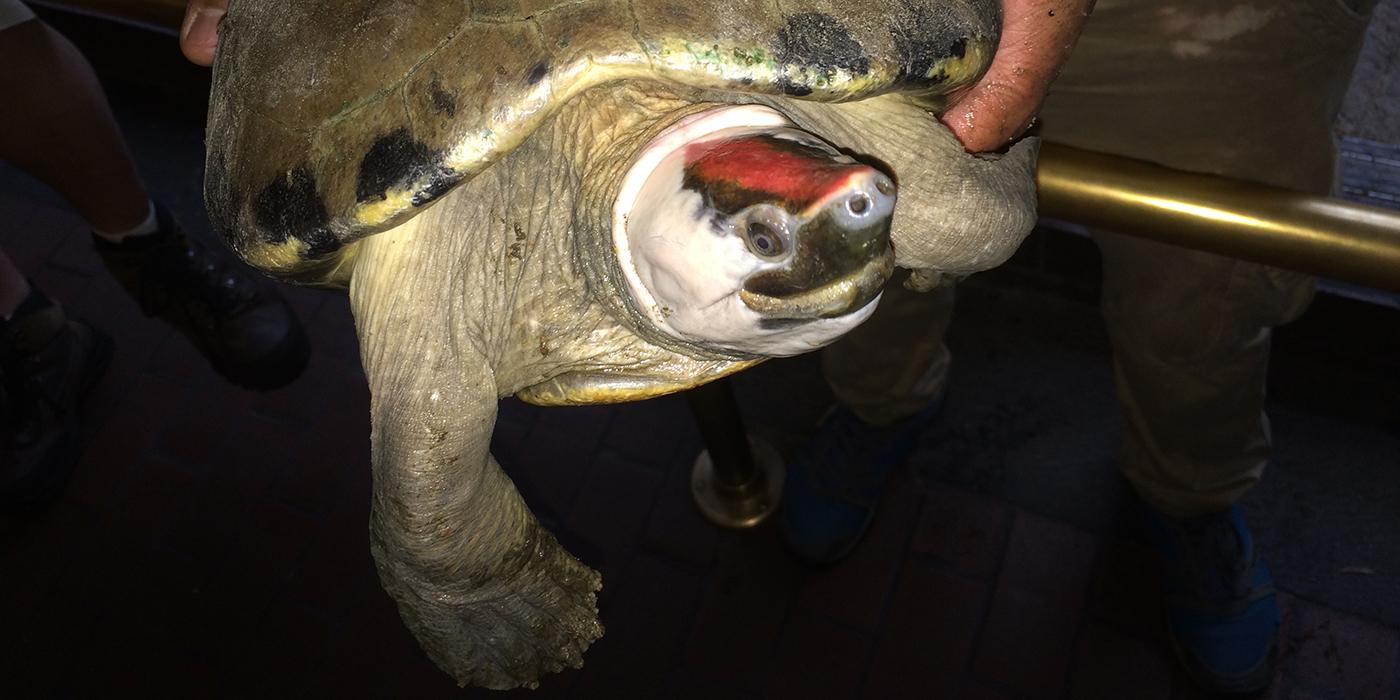Physical Description
Female painted terrapins are larger but less colorful than males. For most of the year, both males and females are dull in appearance, featuring brown and grey shells with solid or broken black stripes or patches on their carapace. Their name comes from their coloration during breeding season. In the summer and winter breeding seasons, males' heads turn white with a strip of red on the top, between their eyes. Their shells also become whiter or lighter gray in appearance, making their stripes more prevalent. Though this change in coloration is more dramatic in males, females also change colors, with their heads becoming redder.
Adapted for aquatic life, painted terrapins have webbed feet, a streamlined carapace and pointed noses that act like a snorkel. Like other reptiles, they are ectothermic or cold-blooded, and bask in the sun to regulate their internal body temperature.
Size
Female painted terrapins may reach between 20 and 28 inches (50 to 70 centimeters) in length while males may only reach 12 to 16 inches (30 to 40 centimeters).
Native Habitat
Painted terrapins are native to Southeast Asia in the countries of Indonesia, Malaysia, Thailand, Sumatra, and Borneo, where they inhabit river estuaries and mangrove swamps. They have to stay in fresh or brackish waterways with low salinity since they cannot excrete salt from their bodies.
Lifespan
Lifespan is unknown, though most turtles are estimated to live between 40 and 80 years.
Food/Eating Habits
Mainly herbivorous, painted terrapins will consume aquatic plants and grasses, fallen leaves, fruit, and occasionally small aquatic invertebrates. At the Smithsonian's National Zoo, painted terrapins eat a diet consisting of various chopped vegetables and fruits.
Reproduction and Development
Painted terrapins typically have two breeding seasons: one between June and August and another between October and January or February. The exact timing may coincide with the dry seasons of the countries they inhabit.
Females lay an average of 10 to 12 eggs in a nest they make on sandy beaches close to the river where they were born. Hatchlings emerge after a 70 to 90 day incubation period and will head to the river on their own. As with other turtles, adults do not care for their young.
Conservation Efforts
Painted terrapins are critically endangered. The primary threats they face include commercial sale of individuals and their eggs for consumption as well as habitat destruction. Additional threats include collection for the pet trade and fishing bycatch.
Compared to many other turtle species, the painted terrapin has a small clutch size (10 to 12 eggs). This, combined with a limited range of nesting beaches, makes it easier for poachers to find and capture individuals and collect their eggs. Despite international trade being banned, sale of individuals and their eggs is still prevalent on the black market.
Development of fisheries and homes, sand mining, construction of dams and sea walls, and pollution all contribute to the destruction of painted terrapin habitats. They are nearly extinct in several locations throughout their range, including Thailand, and are limited due to their need for beaches to lay their eggs and inability to survive in high salinity waterways.
Help this Species
- Practice ecotourism by being an advocate for the environment when you’re on vacation. During your travels, support, visit or volunteer with organizations that protect wildlife. Shop smart too! Avoid buying products made from animals, which could support poaching and the illegal wildlife trade.
- Avoid single-use plastics, such as plastic bottles, bags and utensils. Choosing reusable options instead can help reduce plastic pollution.
- Try fundraising for conservation organizations in new and fun ways. You could donate your birthday to conservation, host a bakesale to benefit wildlife or Adopt a Species!




